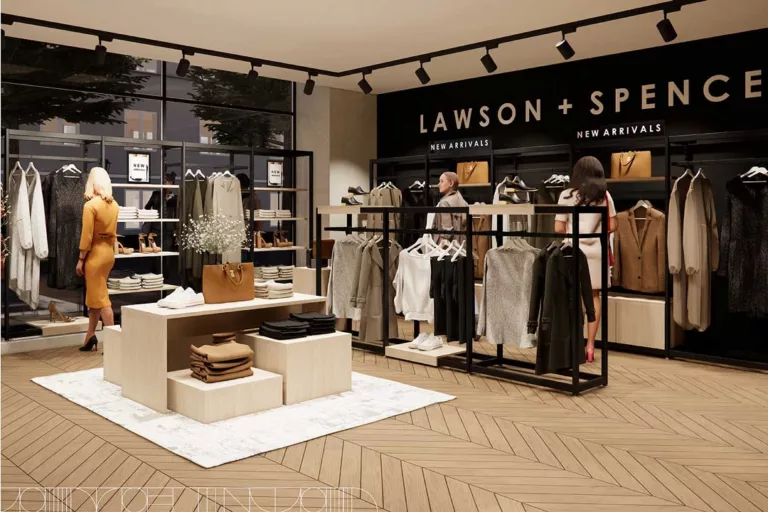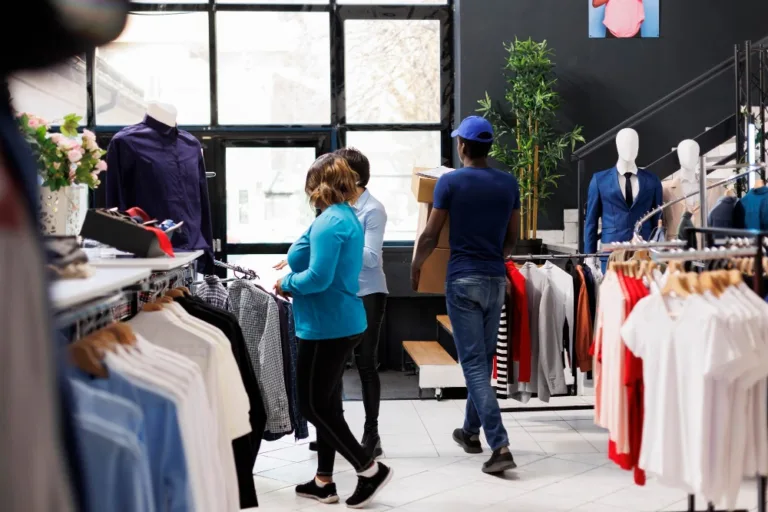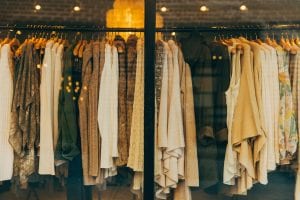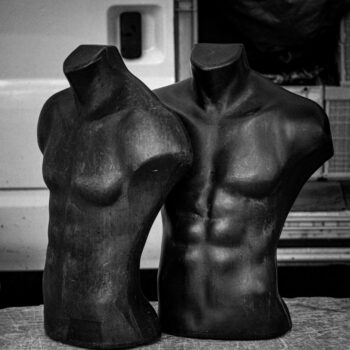- Post published:19/07/2024
- Post category:Industry insights, tips & news
- Post comments:0 Comments
Retail design is increasingly important to retail customers. With the increase in consumerism, customers are increasingly disloyal to where they shop. Retail owners need to be innovative to retain customers and recapture lost customers.
Brick-n-mortar stores remain one of the best ways to attract customers and stand out from competitors.
We already know that retail interior design helps brands outperform their competition by over 200%. But do retail owners understand the different elements of store layout design?
Brands need to consider maximising their retail space to improve the shopping experience. This is a proven method to drive foot traffic into your retail store.

1. Shop design to grab attention
According to research, it takes a customer eight seconds to pass your storefront. Once a person has gone two seconds into this journey, they will unlikely turn around. This means that the retail store has four seconds to grab the customer’s attention. This is an incredibly short amount of time, no matter the size of your brand segment within the consumer market.
Retail store owners can attempt to capture the attention of passing customers. You can achieve this by using resources like window displays and shop fitout design.
Brands can build a relationship with customers by sharing a consistent message before they enter the store.
2. The decompression zone in your retail design
Savvy retailers need to be aware of what is often called the “decompression zone”.
According to research by Paco Underhill, the first few feet within a store are where customers adjust to the new space. As a result, customers ignore or forget products placed at the entrance.
Retailers have the opportunity to take advantage of the decompression zone. Using elements such as lighting and flooring in your retail fitout can create a contrast to the outside environment.
This shift alerts customers to the changing environment and helps them pay attention to the first products they encounter.
3. The customer journey and your store layout design
Retailers often neglect the customer journey when designing their store, despite it being an important element. This results in disorganised floor plans and complicated layouts. These stores create frustration for the customer.
Retailers should consider the path they want the customer to take when browsing their retail store. This means considering how to merchandise the retail displays, placement of the point of sales, and wayfinding techniques.
The branding used in a retail store plays an important part in the customer journey. Retail owners should consider this at all stages of the shop fitting design.
By getting this stage right early on, retailers can then comfortably get creative with the space they have available.

4. Learn from the customer
The design agency, Green Room, uses a four-stage IDEA process. This method involves analysing the brand’s needs, customers, and market environment. This method provides insights into the customers and what motivates them to make buying decisions.
In-depth insight enables brands to not only meet the needs of their customers but to exceed them. Brands may not be able to capture the depth of insight and information our team can, but they should take inspiration.
Customer and market research are a simple way for retailers to identify what their customer’s buying needs are. Using this information, the retail store can create a natural flow within their retail store design.
5. Interactive shop design
With the rise of omnichannel shopping, bricks-and-mortar retail stores need to capture the attention of passing customers. Interactive and experiential design elements are perfect for this.
Through seamless digital integration, interactivity, and digital design, a brand can encourage shoppers to dwell in a space. This method helps forge relationships and convert shoppers into buyers.
Finding ways to increase the dwell time of a shopper is a crucial step when planning your store layout design.
6. Lighting up your displays
Lighting is another overlooked element of great retail design but is important. The different use of lighting creates an ambiance, builds an atmosphere, and aids the showcasing of your merchandise.
Brands should consider how to implement the best type of lighting, the location, and the method. Using lighting in key locations of your retail design will drive traffic to the merchandise placed in displays.
7. Hero product presentation
Creating an eye-catching merchandising display is always important in the overall shop layout design. But great retail design includes unique and memorable product presentations.
Retailers that take the time to learn what their customers want and how to appeal to them, with product displays are more successful.
An example of this is the various placements of mannequins in your shop design. Another good example is placing small items around your point of sale display and using signage. Showcasing your products in new and unique ways will grab the customer’s attention. Maximising your space with your retail fitout will allow you to merchandise more effectively.
8. Flexibility and seasonal retail design.
One of the biggest challenges for retailers is flexibility within a store.
As the seasons change, the product lines change as well, increasing the need for new promotions. The retail store layout and design should assist the merchandise changing with the ability to remain flexible. This enables adjusting the product displays to suit the changing products.
When looking to add flexibility to your in-store design, consider the element you want to keep consistent. Customers need to recognise the brand through merchandising to feel comfortable when browsing a store.
The challenge here is to strike the perfect balance between consistency and the ‘wow’ factor.

9. Accessibility and the “Butt Brush” effect
Retailers can have the most eye-catching, well-designed store in the world. But if it is not accessible to all shoppers, it might as well have a “Closed” sign above the door.
Shop aisles and displays need to be wide enough for shoppers with disabilities. Shelving needs to be an appropriate height so customers can reach the products they want. Displays need to be disruptive, but not make walking around the store impossible.
Retailers need to also think about what Paco Underhill calls the “Butt Brush” effect. This is when a customer is interested in a product, they will move away from the display. This is to avoid someone touching you from behind. You can read more about this theory in his book: Why We Buy: The Science of Shopping.
10. Check our points in retail design.
The final element of great retail
Customers browsing your store will make a buying decision. Once they have converted to a buyer, the checkout point should be visible. This is the ‘make or break’ point in the customer journey. Retailers need to encourage sales.
This means carefully considering the positioning of check-out counters and the queuing pathway. Using this logic, you can keep customers engaged and promote impulse purchases.
Article adapted from Green Room Design.
Not sure where to start? With 50 years retail experience, Apex Display can assist with designing your retail store. Using a 5 Step Design Process that includes an in-depth consultation, designing your store has never been easier.









